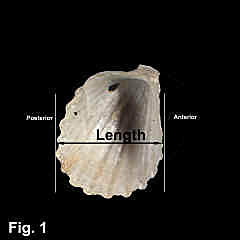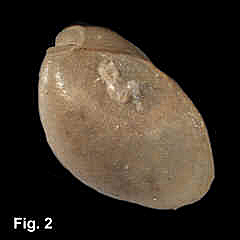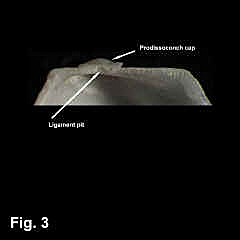|
< Previous family introduction |
|
|
Family Philobryidae
|
|
|
The Philobryidae is a family of minute or small bivalves, some of which have a prominent flat cap on top of the umbo formed by the prodissoconch. The hinge has strong vertical teeth separated by the ligament. Species vary from a few millimetres in size up to about 15 mm; the NSW species only reach up to about 5 mm. The family consists of about 100 species (Huber, 2010), and is mainly restricted to the cooler seas of the southern hemisphere and it is most numerous in the waters of New Zealand, southern Australia and Antarctica. Philobryids occur from the intertidal to deeper waters, down to at least 550 m in NSW, but down to at least 1000 m in Antarctic waters. They are viviparous animals, brooding their young within the gill cavity. This implies restricted dispersal capability, which is seen in the restricted distribution of the species. The animals are epibyssate i.e., they live attached to hard substrates by a byssus, such as rocks, seaweed, hydrozoans or sea urchins. Morton (1978) figured the New Zealand species Philobrya munita in its living position attached to an algal holdfast. There are 12 species of Philobryidae recorded from NSW and documented here. Pholibrya rubra is known from algal washings intertidally and is assumed to attach to seaweed in a similar manner to P. munita; it is common as empty shells in beach washup. Several species are only known as empty shells from beach washup, with the rest being known from deeper water, from 50 m down to 400 m depth. The first of the NSW philobryids were described by Charles Hedley, from 1899 to 1915. His superb illustrations of shells and hinge structure laid the basis for later workers. Tom Iredale described additional species in 1931, and Charles Laseron added further species in 1953, mainly collected from shell sand in beach washup. Family Reference Lamprell & Healy, in Bivalves of Australia vol. 2, catalogued the Australian philobryid fauna, including the NSW species. The present work clarifies and refines their presentation for the NSW species, particularly in giving ranges and habitats of the species. Coverage All the known species from NSW are treated here. Identification Notes The NSW philobryids are recognised by their minute or small size, hinge structure, and in some cases, a prodissoconch cap.
Fig. 1: Measurement of shell length Fig. 2: Prodissoconch cap of Philobrya inornata Fig. 3: Hinge detail in Cosa pharetra
|


